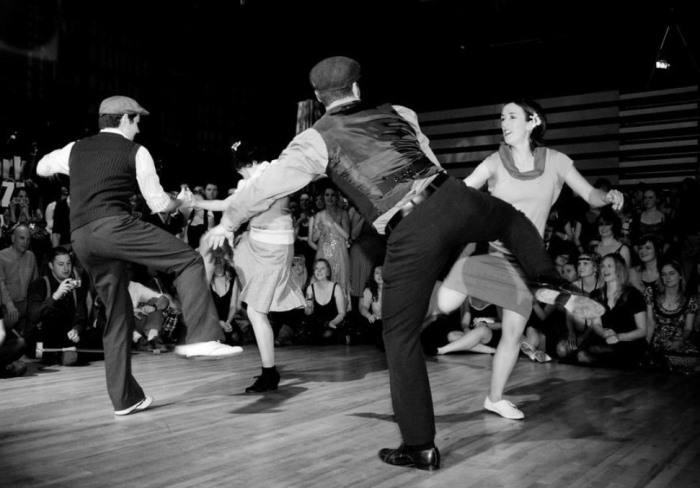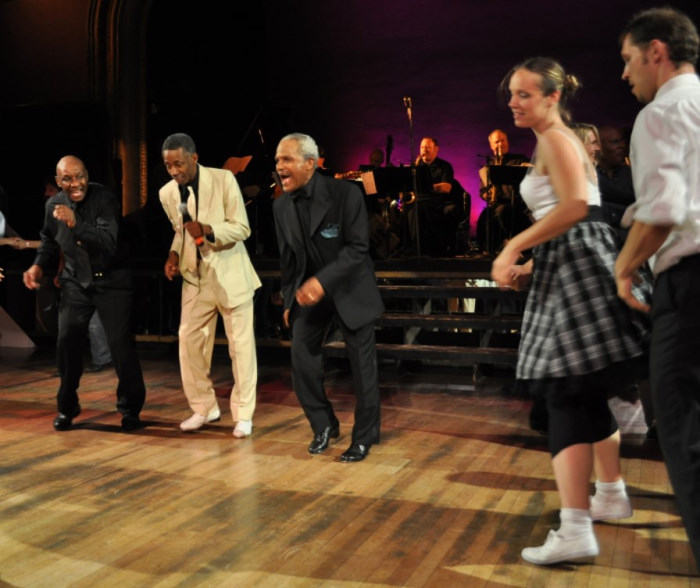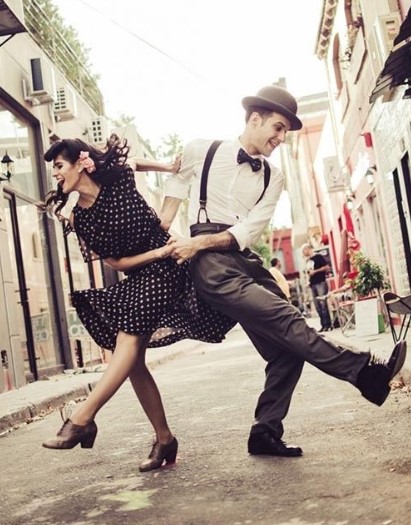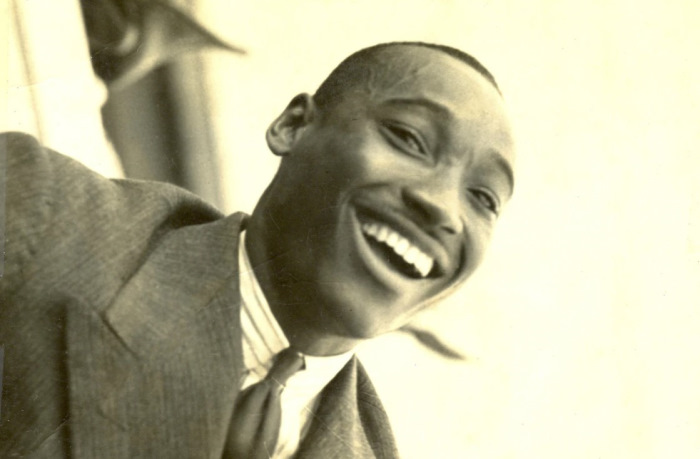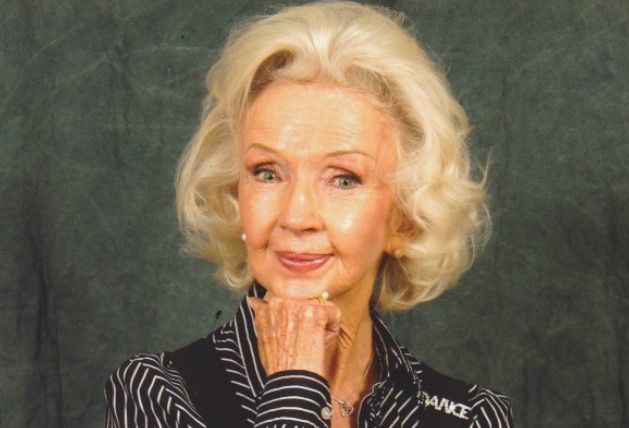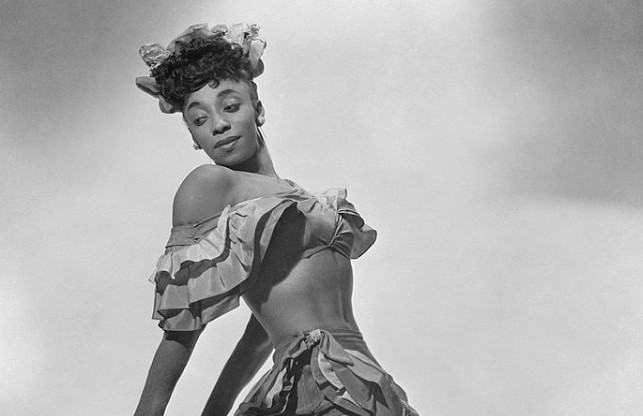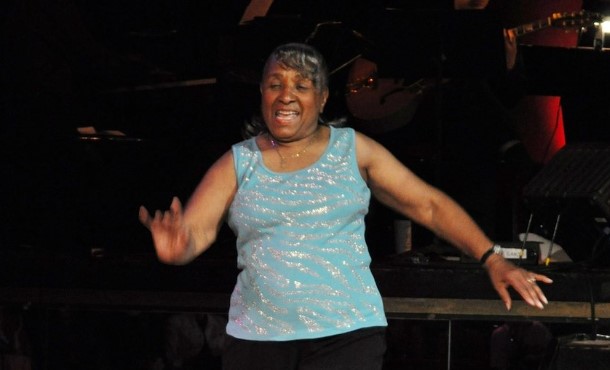The Lindy Hop dance is a vibrant and energetic swing dance that has been around for over a century. But to this day, it still holds much sway in the competitive dancing scene. You’ll find events, festivals, and performances dedicated to Lindy Hop swinging every few weeks.
What has made this dance so special among enthusiasts? And what’s its history like?
If you’re curious, this Lindy Hop guide can help! Today, we’ll be exploring the history of Lindy Hop, its unique characteristics, and the basic steps to get started. Jump in!
Table of Contents
What Is Lindy Hop Dance?
If someone asks you, “Is swing dance the same as Lindy Hop,” then tell them that it’s widely considered the “original” swing dance!
The Lindy Hop is usually danced to jazz and swing music, and you can quickly identify it by its playful and syncopated rhythm. The highlight of the choreography is what’s known as the Lindy Hop swing-out. It’s a signature move where dance partners swing out from each other and then back again.
As for the name, the Lindy Hop is named after Charles Lindbergh’s trans-Atlantic flight, or “hop,” in 1927. Lindbergh was the first aviator to fly solo across the Atlantic, and the event made him a superstar at the time.
Many songs, orchestras, bands, and of course, dances were named after him … among which was the Lindy Hop.
Lindy Hop Dance Origin & History
Although there are a lot of debates about the true origin of the Lindy Hop dance, most sources agree that it came from the Harlem neighborhood in New York City in the 1920s.
The history of Lindy Hop dance began in the Savoy Ballroom, which was a very popular dance hall in Harlem at the time. Eventually, the dance caught on and became super popular in New York and cities from the East to West Coast. In every dance hall that people go to, there’s guaranteed to be at least a couple dancing the Lindy Hop.
And not just in America. Eventually, the dance spread overseas and could be found in many countries around the world!
The Lindy Hop is considered the original swing dance and what has ultimately kickstarted the Swing Era. The dance is a fusion of various African American dance styles, including jazz, tap, and breakaway. Throughout the 1930s and 1940s, the dance continued to evolve and grow, adapting to new musical styles and cultural influences.
In the 1950s and 1960s, the popularity of Lindy Hop declined (and so was swing dancing). However, it was revived in the 1980s and 1990s when a new generation of dancers took it up again and gave it a more modern spin.
That’s how, in 2023, you’ll find many “modern” variations of the Lindy Hop (more on that later).
You’ll love: Where Did The Pasodoble Dance Originate?
Lindy Hop Dance Styles
As we said earlier, Lindy Hop has greatly evolved over the years. Today, people are performing many different styles of dance. Here are some styles you’ll get to see when you visit a swing dance festival.
Traditional Lindy Hop (Savoy-Style)
The traditional Lindy Hop is the first dance style in the genre. It’s also called “Savoy-style” Lindy Hop as a homage to the dance hall where the Lindy Hop was first performed: the Savoy Ballroom in Harlem, New York.
When people talk about the dance, this is probably what they’re talking about. The Savoy-style dance is characterized by its smooth, flowing movements in circular patterns and high energy.
Improvisation is the key to the Savoy style, too. The best performances are those with the most creative and soulful improvisations!
Hollywood-Style
Hollywood-style Lindy Hop (also known as “Dean Collins” or “Smooth-style”) is a reconstructed form of Lindy Hop dancing based on old movies in the 1930s and 1940s.
Particularly, the dance followed the choreography and style of popular dancers like Dean Collins (hence the name), Jewel McGowan, and Jean Veloz.
In Hollywood style, the signature move of the Lindy Hop – known as the swingout – is performed in a position that resembles someone about to sit on a stool.
This brings the dancer’s center of balance closer to the ground. Whenever you watch a performance and see this pose being struck, then you’ll know for certain that you’re watching a Hollywood-style Lindy Hop performance.
The Hollywood style is known for its straight back and slight forward tilt, creating a piked position. Additionally, this style is slotted, meaning that the follower moves in a straight line. This is the opposite of Savoy-style Lindy Hop where dancers move in a circular motion instead.
Modern Lindy Hop
In the 21st century, the Lindy Hop has its own variation, too. Called “modern Lindy Hop dance,” this style “updates” the look and choreography of the dance with contemporary techniques and styling.
Typically, you’ll find the dance tempos to be faster than in traditional Lindy Hop performances. The footwork is usually more complex, as well.
But most striking of all is the music. Instead of using swing music or popular songs from the 30s and 40s, dancers will use modern music. It totally transforms the dance and lends it a youthfulness that’s much needed for the Lindy Hop to attract the younger generation of dancers in the 2020s.
Lindy Hop Dance Steps
Dancing the Lindy Hop, like any kind of swing dancing, will require you to learn just a few basic footwork and moves. After that, you can improvise on the stage to your heart’s content.
Since it’s a type of social dance, it shouldn’t take you too long to get the basic movements down. It’s intentionally choreographed to be easy to learn and approachable for everyone!
Here are a few common steps that are often used by Lindy Hop dancers.
Swingout (the Lindy Turn)
The Swingout (also called the “Lindy Turn”) is an essential move you must learn. It is the signature of Lindy Hop. If you were to take a class, this is typically the first move the instructor will teach you.
In the basic Swingout, both partners start by facing each other in the open position, with the lead holding the follow’s right hand with their left hand.
When the pattern starts, the lead will reel the follow into a closed position. Then, the lead will redirect the follow’s momentum and send them back out again.
As for the footwork, the Swingout follows a “step-step-tri-ple-step” pattern with the follow matching the lead’s footwork.
Circle
The circle is exactly what it sounded like. The lead and follow will move around the dance floor in a circular motion, usually in opposite directions to one another.
Charleston
The Charleston step is a fast-paced, upbeat step incorporated into many Lindy Hop routines, solo and partnered. It involves a rocking and kicking motion.
Tuck Turn
The tuck turn is a step that involves the lead and follows tucking in their knees and spinning in place. This is very simple (yet super effective!) Lindy Hop dance move that you can add to your routine to add some extra jazziness to your performance.
Lindy Hop Dance Clothes
When it comes to Lindy Hop dance clothing, comfort and mobility are the most important factors to consider. Lindy Hop is a fast-paced, furious dance that’ll get you moving around a lot. So, it’s important to wear clothing that allows for ease of motion.
Back in the 1930s and 40s, people didn’t have much choice in clothing to wear. But in the 21st century, in many events, the dress codes are very loose: many dancers wear casual, comfy clothes like t-shirts, cotton skirts, and even couple sweatpants and still rock the stage!
Regarding footwear, swing dancers often wear sneakers or other comfortable, supportive shoes with low heels. For female dancers, high heels are not recommended for Lindy Hop as they can be dangerous and limit mobility.
Some dancers prefer to wear special Lindy Hop dance shoes with suede soles, as this type of sole provides a good grip on the dance floor.
When it comes to accessories, many Lindy Hop dancers choose to wear vintage accessories to add a touch of flair to their costumes. This might include bow ties, suspenders, and fedoras for men. Women can opt for vintage-style dresses, headbands, and beaded necklaces.
However, many Lindy Hop events and festivals have strict dress codes that require you to dress in vintage clothes (suits with suspenders, dresses, etc.) In that case, take it as an opportunity to dress up!
Lindy Hop Music
Lindy Hop is often danced to jazz music, particularly, big band swing, classic jazz, and blues. In addition to jazz, Lindy Hop can be performed in other music genres, such as swing, rock, and R&B.
The key to choosing the right music for Lindy Hop is to find energetic and upbeat music with a strong rhythm and a good beat for dancing.
You’ll love: 50+ Best Country Dance Songs
Famous Lindy Hop Dancers
Looking for good performances and records to watch? Here are the most famous Lindy Hop dancers you should know!
George “Shorty” Snowden
George “Shorty” Snowden (1904-1982) was an African-American dancer who’s widely regarded as one of the pioneers of the Lindy Hop dance style.
Together with his partner, Mattie Purnell, they invented the Harlem Lindy Hop at Rockland Palace (a dance hall in the Harlem area) in 1928. This dance was based on a breakaway pattern that the pair accidentally discovered during a dance marathon.
While it was not the first Lindy Hop dance, Snowden’s variant of the Lindy Hop was the most popular by far. As a matter of fact, this variant is now what’s called the “Savoy-style Lindy Hop” today!
Frankie Manning
Frankie Manning (1914-2009) was also considered one of the first founders of Lindy Hop.
Born in Jacksonville, Florida, he moved to Harlem with his mother after his parents separated. His dancing talent displayed itself very early on.
Every summer, his mother would send him to live with his relatives on their farm in South Carolina. And every Saturday, farmhands, and locals would gather together to sing and host street dances. It’s there that Frankie learned how to dance and fell in love with it.
As he got older, Frankie decided to learn dance more in-depth. At one point, he would listen to musical records while practicing dancing with a broom and a chair in his bedroom. He also came to the Savoy Ballroom in Harlem for “dance-offs” with others.
During one competition, he and his partner, Frieda Washington, faced down with George Snowden – one of the original founders of the Lindy Hop dance.
He’s credited to be the first person to perform an aerial in a swing dance competition!
Jean Phelps Veloz – The icon of the Hollywood-Style Lindy Hop
When it comes to Hollywood-style Lindy Hop, you cannot miss Jean Phelps Veloz (1924-2023). She’s not only one of the pioneers of this style of Lindy Hop but she’s also known as one of the most influential figures behind the brief revival of swing dancing in the 80s and 90s.
During the 1940s and 50s, Jean was an actress and starred in many different musicals, like Swing Fever (1943), Jive Junction (1943), and The Horn Blows at Midnight (1945).
Norma Miller
Norma Miller (1919-2019) is known by many as the “Queen of Swing.” Besides being a prolific swing dancer, Norma was also an author, choreographer, and comedian with a long career spanning over seven decades.
Her life and career were the focal points of a 72-minute documentary released in 2006 by John Biffar, aptly called “Queen of Swing.” We highly recommend looking through this superb documentary if you’d like to know more about the history of swing dancing (and the Lindy Hop).
Lennart Westerlund
In the 1980s, Lennart Westerlund got acquainted with swing dancing by practicing the Swedish variant of the American Jitterbug.
And in 1983, according to his official biography, Lennart discovered the Lindy Hop by reading through old books and watching vintage movies. Enchanted by the energetic and beautiful dance, he traveled all the way to New York to learn more about the roots and history of the dance.
While there, he had the opportunity to study with legendary old-timers like Al Minns, Frankie Manning, and Norma Miller.
In 1985, Lennart co-founded the semi-professional Swedish dance company, The Rhythm Hot Shot, which later became the highly acclaimed Harlem Hot Shot.
To this day, Lennart remains an active dancer, instructor, and judge of Lindy Hop dance competitions around the country. He’s also a speaker, inspiring the younger generations with lectures about the joy of dancing!
Sugar Sullivan
Sugar Sullivan was the definition of a child prodigy. She started her career as a dancer and choreographer when she was nine. Notably, she was a member of the Original Jazz Dancers, which was a renowned group of Lindy Hop dancers from Harlem’s golden era.
Sugar has had the privilege of performing with some of the biggest names in the swing dancing community, including the Harlem Blues & Jazz Band, Cab Calloway’s Hi-De-Ho Orchestra, Duke Ellington Orchestra, and more.
… and Others!
The Lindy Hopping community is huge, with many legends like Chazz Young, Sylvia Sykes, Dawn Hampton, Barbara Billups, and Sonny Allen. If you’re interested in learning more, there are records of their performances freely available online!
Final Words
Lindy Hop is a historic and vibrant dance form that has stood the test of time. Though many have considered it a “by-gone art,” many clubs and competitions still exist to keep swing dancing going.
So, if you’re interested in giving it a shot, search for a local club or studio in your area! We’re sure that you’ll have a good time trying it out.
